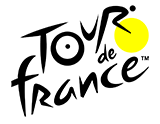- A new stage site
- Pass (1,497m) in the Bornes massif in the Alps in Haute-Savoie (74), attached to the commune of Brison (or Brizon)
- Population: 470 (Brisonniers and Brisonnières)
The Tour de l’Avenir is the race where young talent is discovered, often highlighting riders destined for a prestigious future. This was the case at Plateau de Solaison, which featured on the route of the 2014 edition of this under-23 race. At the end of the stage’s final climb, the top five included Miguel Ángel López, Pierre Latour and Giulio Ciccone. The Critérium du Dauphiné then sent its champions to battle it out there on the final stage in 2017, when Jakob Fuglsang took the opportunity to remove the leader’s jersey from Richie Porte’s shoulders. In 2022, the final day was dominated by Jumbo-Visma: the stage went to Jonas Vingegaard and overall victory to Primož Roglič after the pair had finished hand in hand.
SOLAISON PLATEAU
Plateau de Solaison
Above the village of Brison, the Solaison plateau is located at an altitude of 1,500 metres in the heart of nature, nestled between the Pointe d'Andey and the Leschaux rocks. It is home to mountain pastures in summer and transforms into a ski area in winter in a preserved wilderness setting. It comprises around fifty scattered mountain chalets, now residential, which bear witness to a pastoral tradition and were once directly linked to the agricultural activities of the commune of Brison.
La Fruitière holiday cottage
Located in the commune of Brison, in Haute Savoie, the former dairy on the Solaison plateau was converted into a group gîte in the early 1990s. The gîte, which is open all year round, can sleep thirty-six people and prepares meals for groups of eight to thirty-six.
Saint-Théodule Church in Brizon
Construction: 1480, then 1852 for the current church.
Style: Sardinian neoclassical.
History: a first chapel was built around 1480 and dedicated to Our Lady, then to Theodore of Octodure. The current church was rebuilt on this former site between 1850 and 1852, according to the plans of architect Ernesto Melano. The building is unusual in that the choir faces west rather than east, as is customary.
Pointe d'Andey
This mountain is located in the north of the Bornes massif. It is surrounded by the Arve Valley, home to the towns of Bonneville and Saint-Pierre-en-Faucigny to the north, the Borne Valley and the Evaux Gorges to the west, the Col de Solaison, which separates it from the Leschaux rocks to the south, and the Mont-Saxonnex plateau to the east. The summit, which rises to an altitude of 1,877 metres, is accessible from the Col de Solaison. The Pointe d'Andey was depicted by Swiss painter Ferdinand Hodler in 1909. This painting, which belongs to the Orsay Museum in Paris, was originally called Paysage (Landscape); it is now entitled La Pointe d'Andey, Vallée de l'Arve (The Pointe d'Andey, Arve Valley) following the identification of the mountain's characteristic shape.
Rochers de Leschaux
This mountain is located in the north of the Bornes massif. It is surrounded by the Borne valley, where the village of Le Petit-Bornand is located to the west and south, the Col de Cenise to the east and the Col de Solaison to the north. The summit, which rises to an altitude of 1,936 metres, is located on the edge of the cliff overlooking Le Petit-Bornand and marks the edge of a ridge.











